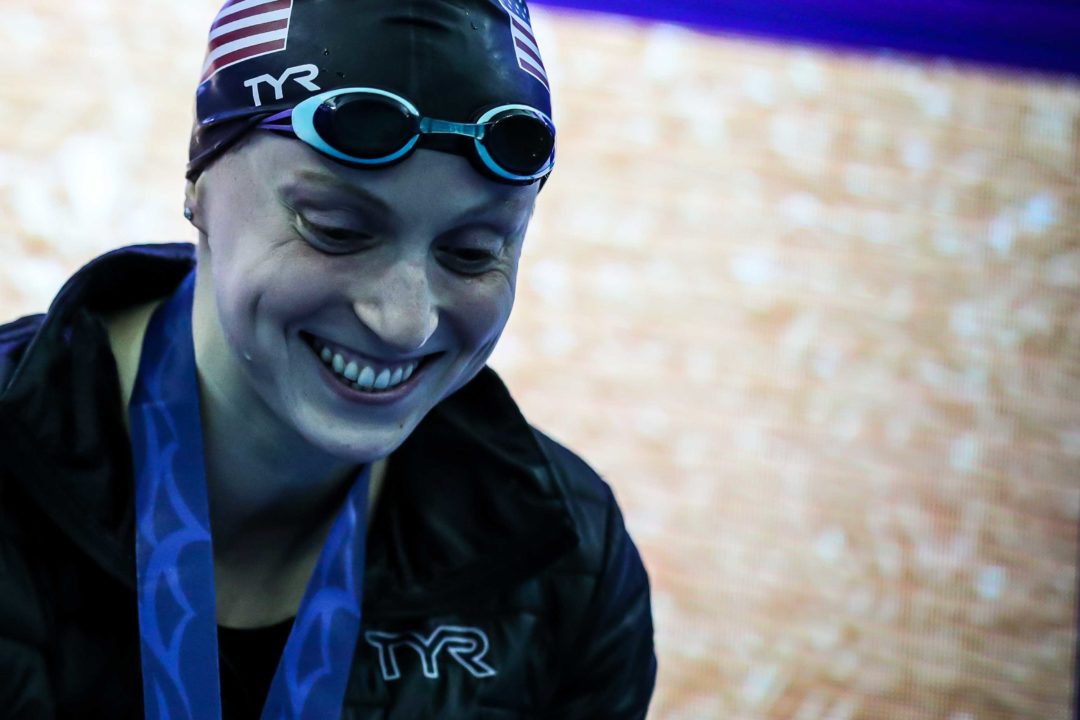As the coronavirus (COVID-19) pandemic continues to rage on, its impact on all things related to daily life, including elite sport, is ever-developing.
Against this backdrop, the U.S. Anti-Doping Agency (USADA) has unveiled the world’s first-ever virtual drug-testing program called ‘Project Believe 2020’ with swimmers Ryan Murphy, Katie Ledecky and Lilly King signed on as initial participants. The pilot program in place right now is expected to last 8 weeks.
“This is the perfect time to pilot USADA‘s virtual drug testing program,” Murphy told SwimSwam on Wednesday. “Travis Tygart and USADA are thorough in minimizing the potential for doping to occur during these tests. I’m confident that this program will continue to promote clean sport in the USA, and I’m hopeful that other countries follow our lead. There is never an excuse to dope.
“They had an answer for all of my questions and the process was pretty straight forward.”
‘Testing kits were sent to the athletes, who then must produce samples of their blood and urine when they receive an unannounced call from a USADA doping control officer, USADA CEO Travis Tygart explained to USA Today.
“The testing is monitored by the officer on Zoom or FaceTime. The athletes then seal the samples and send them via overnight delivery to a World Anti-Doping Agency accredited laboratory for analysis.”
Tygart says that, due to privacy concerns with the internet involved, athletes are required to show USADA personnel the inside of the bathroom through their phone or laptop, then set the device right outside the door during the collection process. For blood collection, the entire process must be shown on video.
One athlete confirmed the process to SwimSwam, saying that the initial test was about 50 minutes, including training on how to collect his own sample. First athletes show the bathroom, via webcam, to the doping control officer, to ensure that there are no ‘alternative samples’ inside the bathroom. Then the athletes place the computer outside of the bathroom with the camera facing the door knob. After that, the door was closed and the collection was timed.
Athletes are then responsible for pouring the sample into the testing containers, measure the specific gravity and temperature and show that to the doping control officer, and ship it off for testing.
King’s take on the process was as follows: “Honestly, I was a little skeptical of it at first. Then after I did my first test, I think they really thought through all the potential loopholes with the testing.
While normally, there is not a closed door between the DCO and the athlete, because the process is being recorded, there were privacy concerns related to sample collection if the sample collection was observed directly.
“There are way too many factors that would go into providing a tainted sample for you to really pull that off during the test unless you were a ridiculously high-level crook.”
As for Ledecky, the dominant freestyler said, “I felt very comfortable with the whole process. This is the perfect time to test something like this. I think it’s great for the circumstances we’re all in right now.”
She also conveyed an important message her participation in this program sends.
“I want the people that I’m competing against to know that I’m clean and to feel confident competing against me,” she said. “I want them to know that I have this commitment to clean sport, and I hope they all do too.”
Many would say that this virtual program is a very proactive step by USADA in a time when other nations are pressing pause on their anti-doping operations. We reported in early February how China’s Anti-Doping Authority (CHINADA) decided to temporarily suspend testing in the interest of health protection.
The following month Canada revealed it, too, would also not continue testing athletes temporarily as a way to combat the spread of coronavirus.

There are other security vulnerabilities with Zoom that have nothing to do with the foolishness of publishing meeting info publicly on social media. Stack based buffer overflows is one that comes to mind immediately (especially on Linux OS).
Which would account for about .01% of the user base 😄
They provided guidance for the “GHOST” Vulnerability and I believe they have since resolved it.
I would hope so. It’s a simple as checking the bounds on an input string using a safer C/C++ function. Shouldn’t have been an issue in the first place. But that’s just the cyber software engineer in me 🙂
Using ZOOM is a bad idea
Because of Zoom specifically or just video conferencing in general?
Might want to check the security on those Zoom calls after the Scottish swimming incident…
I’m confident that USADA is not publishing the meeting info publicly on social media.